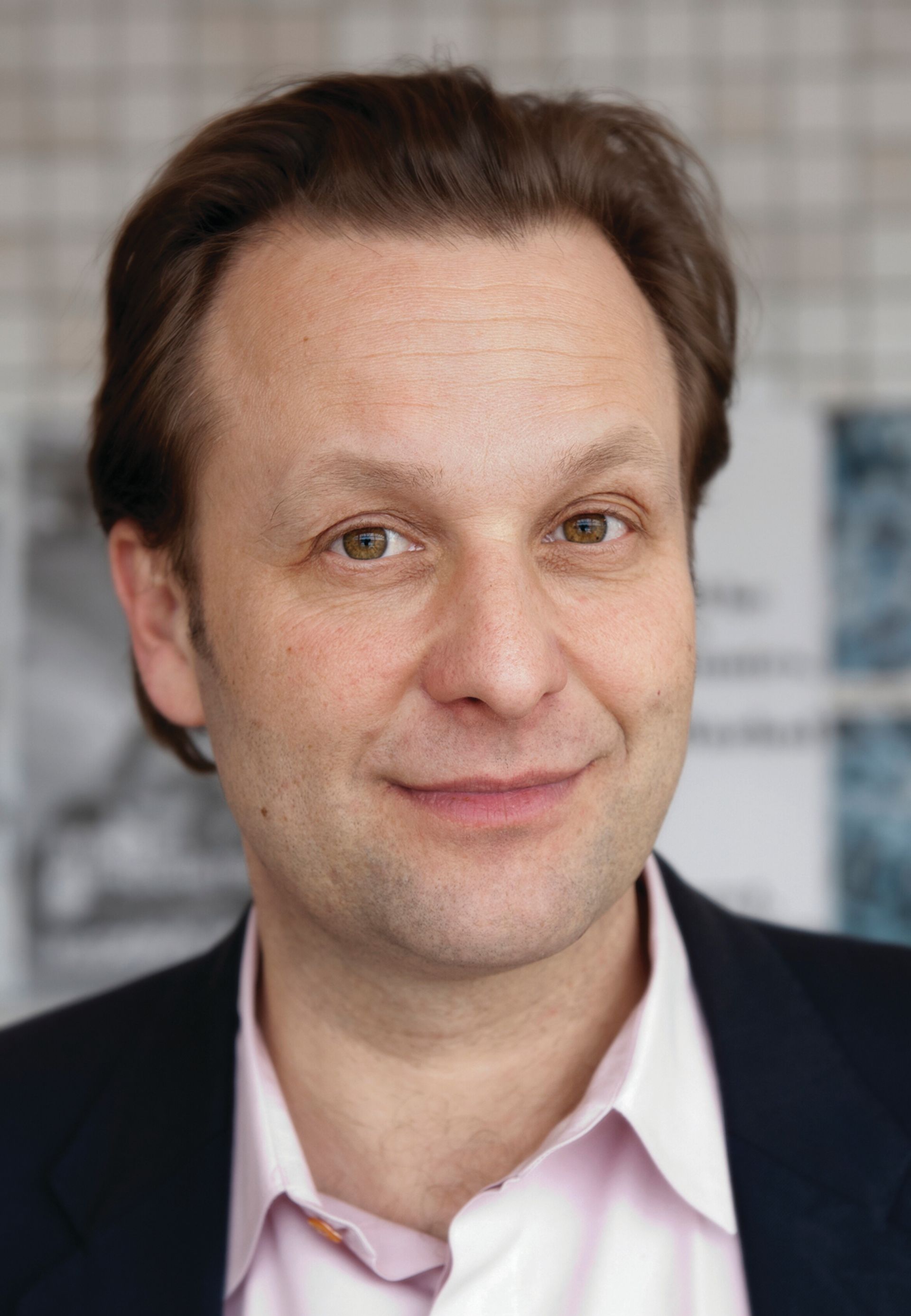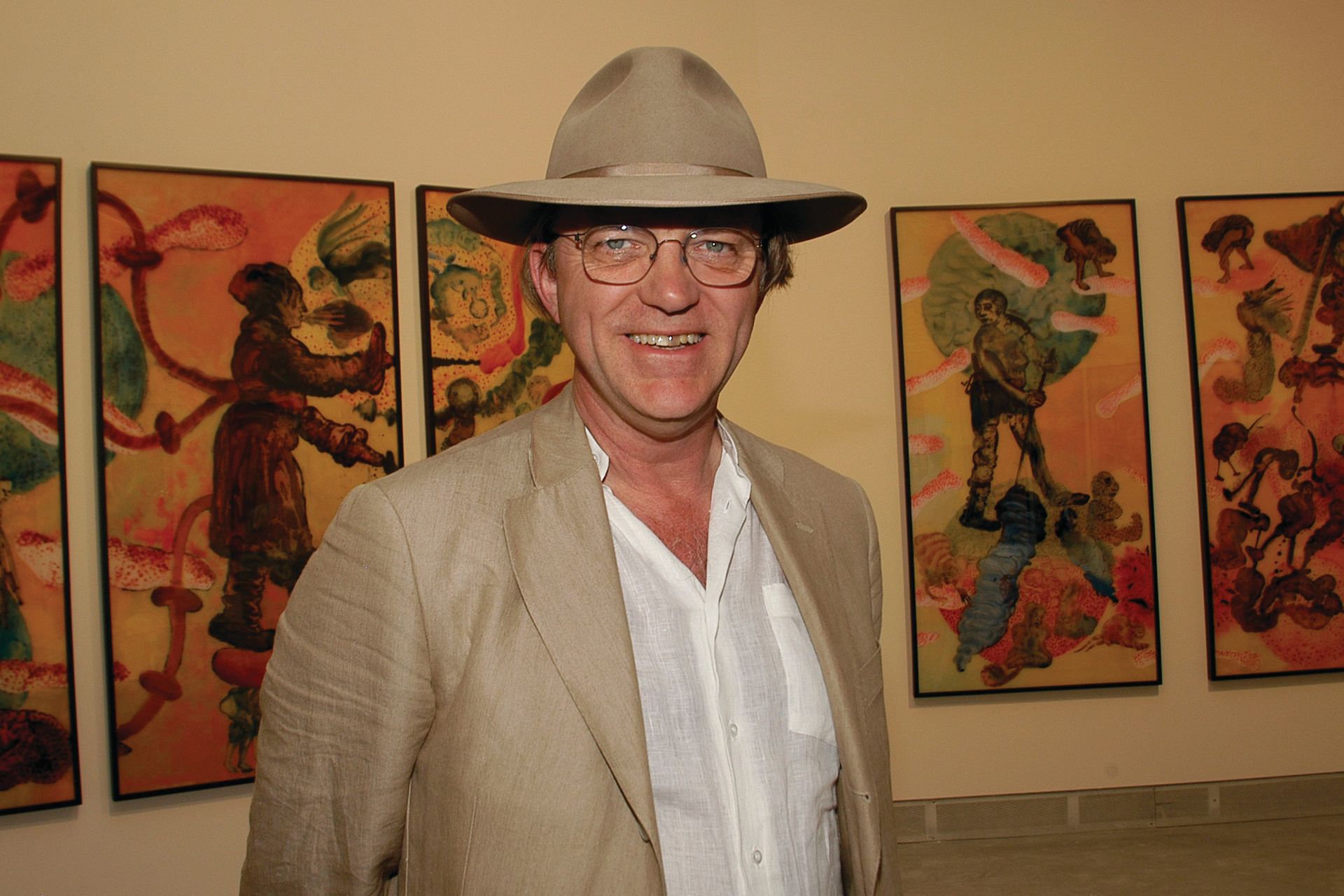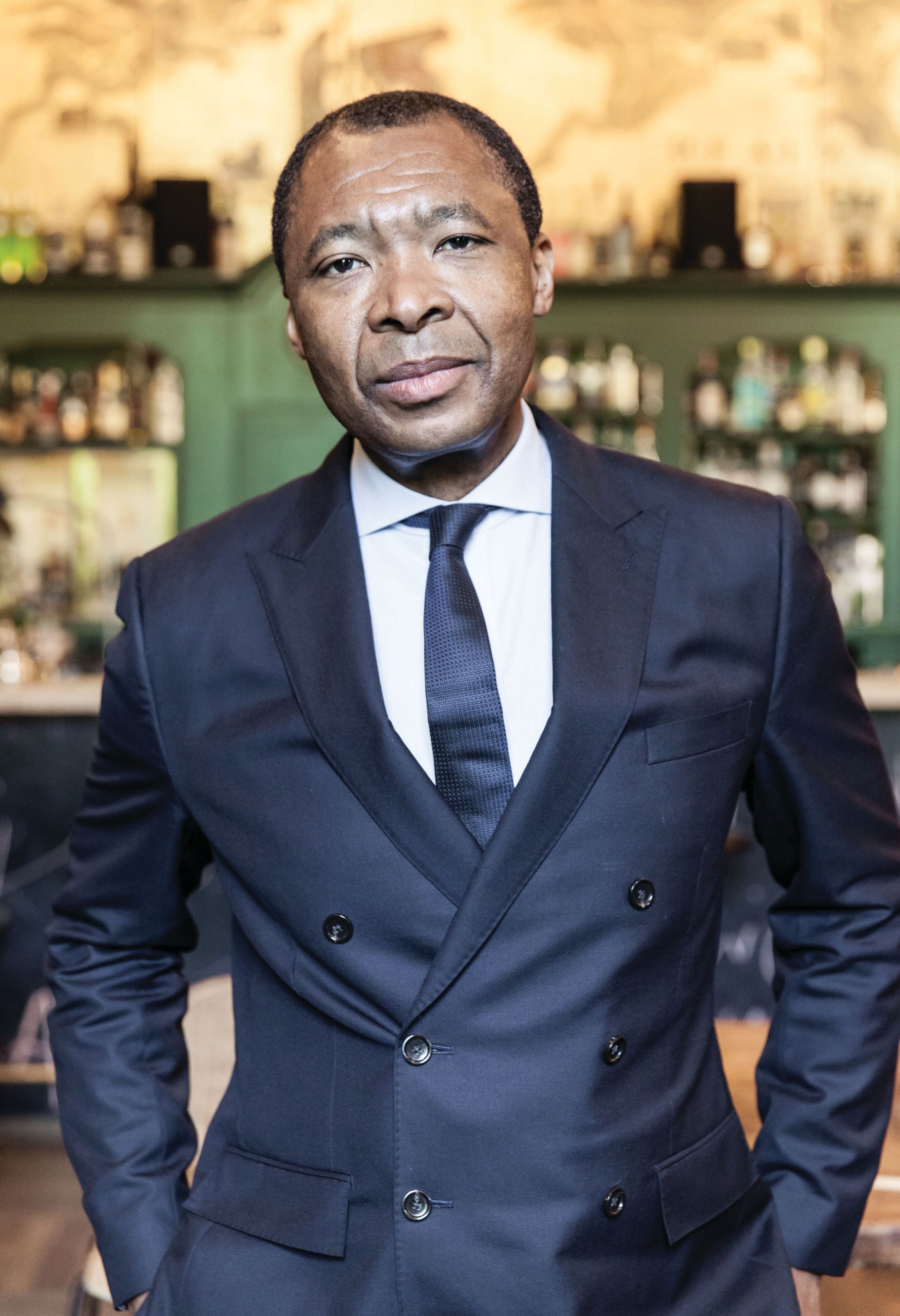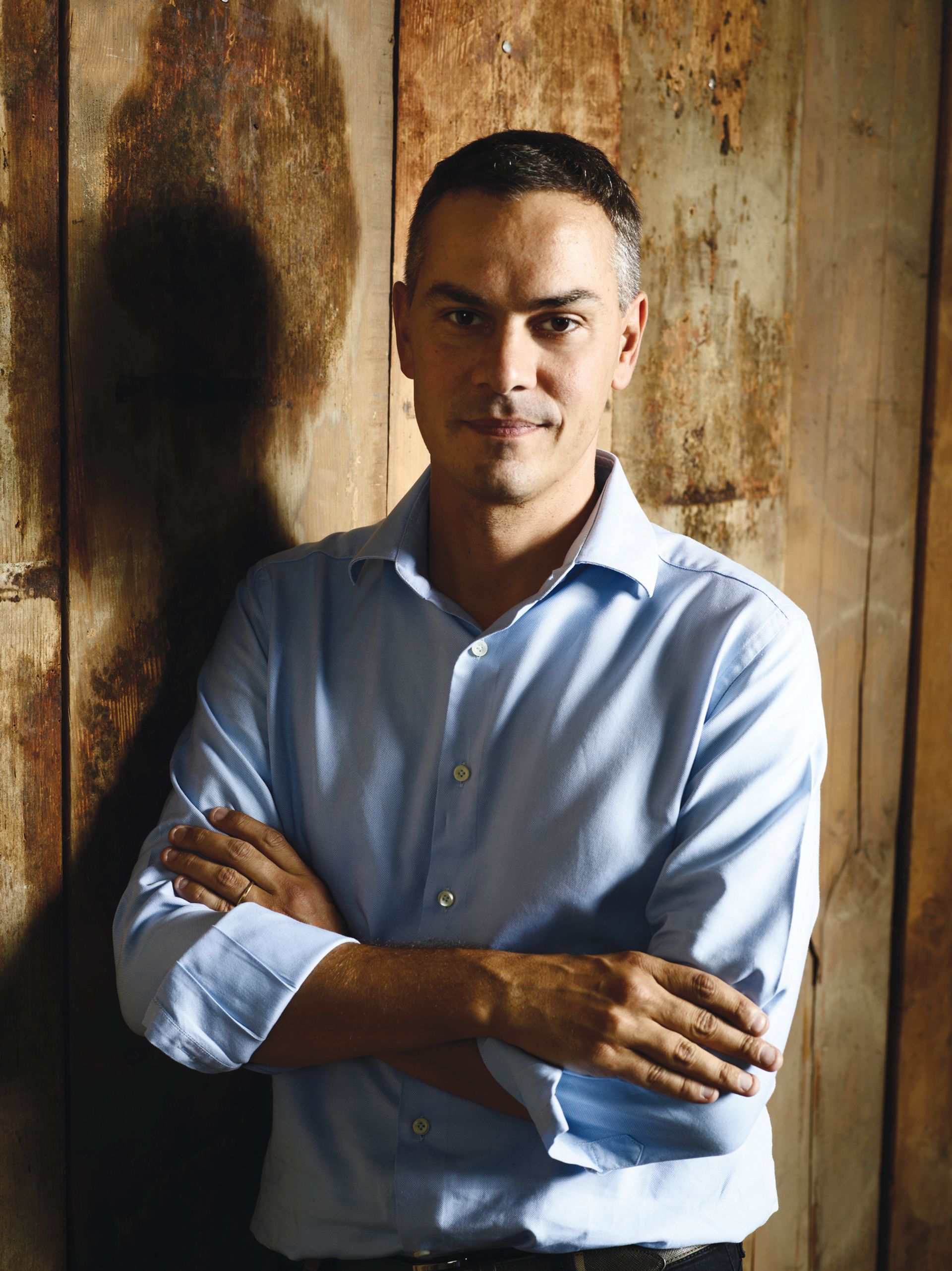
Daniel Birnbaum
Director, Moderna Museet, Stockholm
2009: Making Worlds
Did organising the Venice Biennale meet your expectations?
In 2003, I was a co-curator; Francesco Bonami was the director, but he delegated large parts of the curatorial job to a number of colleagues. And I did the whole Italian pavilion—now known as the international section— with him. So I had seen the madness, as they say, from the inside. When I was offered the job for 2009, I knew that I didn’t want to do the same thing again. And they also insisted that I shouldn’t find a number of co-curators—I should do one show. So I tried to translate the complexity of the curatorial model in 2003 into a complexity of individual artistic contributions. I handed over certain parts of the Biennale to individual artists that were almost as large as entire exhibitions in the 2003 version. Something by Pascale Marthine Tayou from Cameroon in the Arsenale was like an exhibition in itself it was so large.
What surprised you?
2008, when I was given the job, was a very special year, with a pretty radical meltdown of the global economy. So it liberated me from certain things; I knew we would get no money from [commercial] galleries. It’s the kind of thing that the Biennale is sometimes criticised for—that the art market is more present than maybe one pretends—but not even the biggest gallerist in the world wanted to contribute. So, instead, I created a new model, in a more systematic way than they had ever had before. We created some sort of matchmaking between foundations in the world, and they could be Swiss, like the Luma Foundation, or Brazilian, like Inhotim, or we could find support from more traditional things, like IFA in Germany—the institution that supports German or German-based artists abroad. It was these rather complex networks that made the big productions possible, because we did actually produce quite a lot of new things.
What did you learn about the artists you commissioned and worked with?
It’s interesting to walk around in a landscape like Venice with an artist who finds his or her own space, where you wouldn’t suspect that they would pick such marginal or strangely invisible pockets of space. That’s something I remember. There was this old building, some sort of storage, but it was the most beautiful thing, where we had William Forsythe, the choreographer. Or Koo Jeong A, the Korean artist, was almost invisible [she buried rhinestones on a lawn]. But they found very poetic locations for their art. Not every artist wants the central space, to speak the language of importance; they also find poetic possibilities in places you would never, ever propose.
What advice would you give to future directors?
The Biennale foundation is an impressive machine and has been around for many decades, so I would probably advise not to be too involved in their business, and simply follow the artists and see how far you can get with them. The presence of the artist is, in the end, what it’s all about.

Robert Storr
Former dean, Yale University School of Art
2007: Think with the Senses, Feel with the Mind: Art in the Present Tense
Did organising the Venice Biennale meet your expectations?
When taking on any large-format international exhibition of a biennial type, I guess the only rule is to expect the unexpected. As things actually happened under the leadership of the president and general manager prior to the current team, little that had been promised or agreed upon when I was offered the directorship was there when I needed it. But if institutional support at the top wasn’t all that I could have hoped for, the professionalism of the permanent staff and the goodwill of artists and patrons exceeded anything I imagined possible. Basically, the Biennale is one vast, collective improvisation, and when everything finally clicks it’s thrilling to be at the centre of it, no matter how frustrating or even hair-raising the process of getting to that point can be.
What surprised you?
Too many things to list, but the vitality of modern Venice was certainly one of them. [Filippo] Marinetti was wrong to regard the city as a kind of morbid museum. The best, most surprising parts of the experience resulted from my decision not to be an absentee or commuter curator, but instead to live in Venice with my family for the final six months of the organising process. One daughter, Suzy, went to the liceo classico, which was a big challenge; the other, Katharine, worked at the Guggenheim and studied Italian. My wife, who studies and plays Renaissance and Baroque music, was in her element as well. And at the end of the day I walked the city for hours, exploring its most obscure corners while feeling the constant heave of the lagoon. What I miss most are Venetian co-workers and friends, and the omnipresence of water.
What did you learn about the artists you commissioned and worked with?
When I was at MoMA [in New York] I ran the projects programme for ten years and had commissioned many works of differing kinds for other exhibitions, so here again it is hard to sum it all up. The most fun was scouting the islands of the lagoon with Pierre Huyghe for locations for a film that, alas, he was unable to make. During much of the time we were followed by Suzy and her boyfriend, Gianmarco, who, as a Venetian, had his own boat.
Artistically, the most gratifying albeit most elusive collaboration may have been with Sigmar Polke, who painted huge canvases too big for the doors of the space allotted him. When we realised this, I gave him the central room in the Italian pavilion. Then, while I was away briefly on Biennale business, he came on his own to measure that much bigger gallery—one that had protected architectural details by Carlo Scarpa—and painted two more huge paintings “tailored” to fill the walls perfectly. After the exhibition closed, [François] Pinault bought them and they moved to the Punta della Dogana and so remain in Venice. That greatly pleases me.
Do you have any advice for future directors?
Choose a theme that is sufficiently vivid but also sufficiently flexible to encompass the actual diversity of the art from which you will be choosing rather than try to impose a big idea that might serve as symposium topic on a cornucopia of images, objects and multimedia works that don’t really have a theoretical common denominator. Biennials are an inefficient context for leading a highly focused discussion about concepts that require precision to be meaningful—even then, art should never be treated as mere illustrations of an overarching curatorial conceit. Curators should never be the subject of their shows.

Okwui Enwezor
Director, Haus der Kunst, Munich
2015: All the World’s Futures
Did organising the Venice Biennale meet your expectations?
I think the Biennale in many ways was an experiment on different levels, bringing together different social aspects of the Biennale programmes that occurred at other times into one framework. To be able to take over that portion in the middle of the central pavilion with David Adjaye’s arena, and rupturing the space between display and liveness, for me, was ultimately very rewarding because it was something that we never thought would actually happen. It was a difficult dream, to have to invest the level of attention that we did to that structure, given the fact that it was temporary, but I think that the Biennale—of course, with some arm twisting [laughs]—responded very strongly. Once they bought into it, they were committed to it fully, and this enabled me to do a number of things.
What did you learn about the artists you commissioned and worked with?
If you take Ibrahim Mahama’s long corridor in the Arsenale, walking alongside these billowing jute curtains—even though Ibrahim had made a site visit, he had done drawings and so on—just the experience of the kind of boundary-making that marked that liminal space was actually quite amazing to see. And Sarah Sze’s garden at the very end of the Giardini—rather than working against the landscape, she integrated the work ever so delicately into the landscape in ways that were almost invisible, but also poetic.
What surprised you?
There weren’t incredible surprises, but getting into that octagon with Fabio Mauri’s work The End, with the reading by Pasolini of a poem that he had done with Mauri [What is Fascism? (1971)], the performative nature of that, and this triangulation of works with Christian Boltanski’s man coughing up blood [L’Homme qui tousse (1969)]—I must say that the effect was much stronger than I had imagined. There was a certain physicality about it, and then you entered the room with Robert Smithson’s Dead Tree; yes, I thought that was surprising.
Do you have any advice for future directors?
Any advice I give future directors they will, of course, ignore completely—and so they should. Everybody does their own thing; I think that’s what makes the continuity of the Biennale so interesting, to just proceed as you see fit. So no advice, other than just take advantage of the good food in Venice.

Massimiliano Gioni
Artistic director, New Museum, New York
2013: The Encyclopaedic Palace
Did organising the Venice Biennale meet your expectations?
I am not really sure what my expectations were. It's a long, tortuous, often painful process, because one needs to work incredibly fast and with very limited resources and on a vast scale. On the other hand, the generosity of the artists and the supporters on the occasion of a biennial is really unparalleled, and that makes it quite a unique experience.
And, unlike many other biennials I have worked on, in Venice one is constantly reminded of the presence of the history of the institution, of the artists and works that have been shown there in the past. For any artist, and for any curator, it is both thrilling and humbling to show in the very same rooms where Klimt showed in 1910, or where Kandinsky, Giacometti, Morandi and O’Keeffe had exhibited decades before.
Do you have any advice for future artistic directors?
Prepare to learn to do a lot with very little, and to lose weight and money, and to do much more fundraising than you probably expected to. But also, being on the lagoon early in the morning is always beautiful, and dinner with some artist friends in pretty much any restaurant near the Arsenale is always memorable.

Bice Curiger
Artistic director, Fondation Vincent van Gogh Arles
2011: ILLUMInations
Did organising the Venice Biennale meet your expectations?
It was a wonderful, enriching, unmatched experience on many levels, but what does one expect when asked to curate the Venice Biennale? It is an offer to create an inspired partnership with all those artists and creative minds you feel are the relevant voices of the moment—those who expand horizons, detecting unrecognised potentialities, germs for future thinking. In my case I also wished to defy a specific convention: keeping out old art—which is so present in Venice—from the Biennale itself. I was so grateful that we succeeded to get the precious loans of three major Tintoretto paintings, and were able to present those incredible works to an open-minded public which comes to see the Biennale, and came to see my exhibition ILLUMInations.
What surprised you?
I was surprised in a very positive way to see how the Biennale team is so well organised—I would say, like Swiss clockwork. And on the human level, it was very pleasant to work with all those very engaged, charming, knowledgeable, cultured persons, who love to improvise when things get impossible and crazy.
What did you learn about the artists you commissioned and worked with?
A particular interesting moment for this question was the creation of the four so-called parapavilions. I had asked Oscar Tuazon, Franz West, Monika Sosnowska and Song Dong to each create a sculptural structure which could at the same time house other artists’ works. The results were stunning.
I worked with each artist on the possible additional artists or works from the start. Oscar built an outdoor platform with floodlights connected to a building, which looked brutally massive and completely precarious at the same time. We used it for performances; a highlight was an impromptu [session] between Patti Smith and Karl Holmqvist on Arthur Rimbaud.
And Franz West decided to recreate the kitchen walls of his studio, “extraverting” them—that is, hanging all the works of his friends (more than 30 of them), which were normally displayed inside on the walls of the kitchen, on the outer walls of the parapavilion, while the inside [space] housed a projection by Dayanita Singh. It was clear that Franz had, to my great amusement and joy, smuggled in 31 additional artists’ names to my Biennale list. I leave it up to the reader to guess which lesson was to be learned from all this. It has to do with being a host—of the unexpected, of the miraculous surprise.
Do you have any advice for future artistic directors?
Just take one step after the other. Wear good shoes, and walk and walk. The magnificence of the surroundings will keep you calm when you need it.


